In celebration of the US Open Golf Tournament, here are five ways our staffing agency approaches finding talent with the mindset of a professional golfer.
Continue readingFive Ways Manufacturers Can Use AI Starting Today
As technology continues to evolve, the manufacturing industry is no exception in embracing the power of AI and chatbots. By integrating these technologies into their operations, manufacturers can unlock valuable insights, optimize their processes, and maintain stringent quality control standards.
Continue reading12 Ways to Stretch Your Fuel Dollar
For many people, getting to work can be the most difficult thing to accomplish each day. If you don’t have a car, or a consistent ride to work, it can be devastating to your ability to get ahead in life.
Continue readingWhy You Should Make Every Day Employee Appreciation Day
Employee Appreciation Day was the brainchild of Bob Nelson, one of Recognition Professionals International’s founding board members. Nelson collaborated with his publishing company, Workman Publishing, to make the holiday appear prominently on workplace calendars starting in 1995. This occasion gives employers and HR Managers a great opportunity to salute and recognize valuable contributions to the team.
Whenever the conversation comes up about Employee Appreciation Day, which is the first Friday of March, someone always says, “Everyday should be Employee Appreciation Day!” It’s a great sentiment, but that’s not an appreciation day, that’s a culture change in your workplace.
With the need to attract and retain talent to meet growing demand, a personal attachment to your employees is critical to culture change. If you’re planning to create a special moment for your employees this year, take this time to condition yourself and your business that you don’t need just one day to do it. Appreciating your employees every day year round is the first step to creating a workplace culture that people want to be a part of.
Some simple ideas that can go along way:
Saying Thank You
The first step in moving beyond just one appreciation day for your staff includes the need to embed recognition into your company culture. Adding recognition for your employee efforts takes the least amount of effort and goes a very long way. Tell someone different everyday how you appreciate their efforts for the company. Not everyone likes to be appreciated the same way. Be sure to ask the person how they like to be recognized. If you want to reward your employees with something other than recognition, we had some non monetary ideas last year during the holidays that employees love.
Make Fridays Special
Friday. It’s the best day of the workweek. Tap into the energy and positivity of your workforce by enhancing their already well-earned mood.
- Giving employees a few extra minutes of a break.
- Having donuts or other food catered for a shift once a quarter.
- Staff Football Pick Em Contests (seasonal)
- Other special employee perks (but not Hawaiian Shirt Day)
Video Message
Take a few minutes a week to record a video from leadership. These messages are universally well-received and have high engagement rates. It is also a useful communication tool with a personal touch.
Educate Them
A 2021 study conducted by Deloitte and the Manufacturing Institute (MI) predicts that 2.1 million manufacturing positions will go unfulfilled by 2030. These empty positions could cost the U.S. a loss of about $1 trillion in GDP.
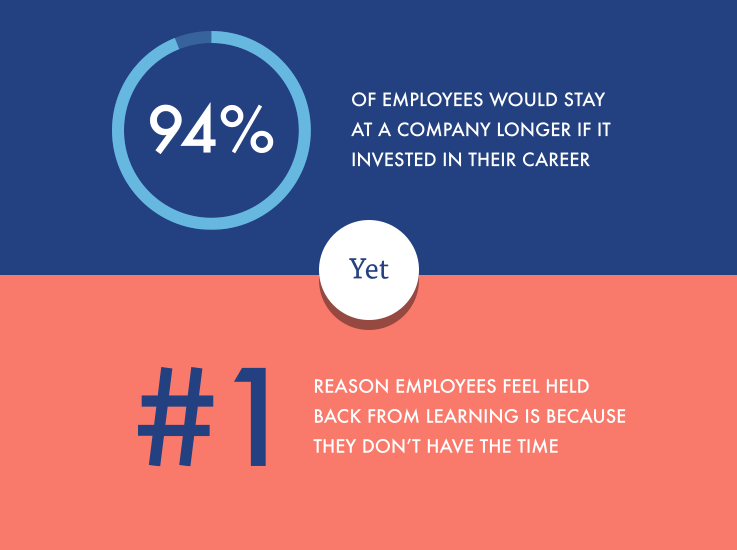
Source: LinkedIn Learning
Millennials will make up three-quarters of the workforce by 2025. Fifty-six percent of managers say they would take a career enhancement course if it were recommended by their employer. The problem is time. Employees want to learn, they just don’t have the time. The good news is over 90% of companies offer online learning. Millennials look at a job as an opportunity to grown and learn. Take hold of that passion and use it to fill the oncoming skills gap headed to manufacturing. Educate them on the job.
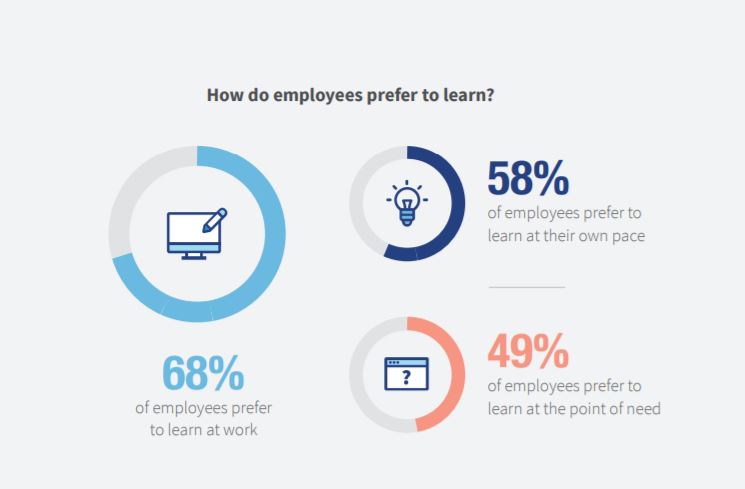
Inclusivity
Employees bring their best each day when they can be their authentic selves while on the job. This means creating a culture of acceptance among your employees, and giving special attention to employees who step up to support efforts to include everyone. Eliminate harassment and bullying if it exists in your workplace. Inclusivity and diversity are among the most sought after qualities in a position amongst millennials and Gen-Z.
If this is the first time you’re hearing of Employee Appreciation Day, now is a good time to learn about how you can celebrate your employees and their contributions to your operation. If your culture needs improvement, take this special day to start a new habit of recognizing great work and celebrating those who give so much to your operation. Then, keep the effort going year round. And next year, the first Friday of March won’t take you by surprise.
Making Day One The ‘Best Day Ever’
Temporary associates sound off on their job placements and how they are treated differently.
The American Staffing Association says that there are more than 3 million temporary and contract workers working for staffing companies in America during an average week and 17 million during a typical year.
Both sides of the employer-employee relationship can feel trepidation about one another. Both sides go in hoping they are a good fit for one another. The early days of an associates assignment are crucial in reducing your turnover, and engaging them to strive to be hired-in for full time employment.
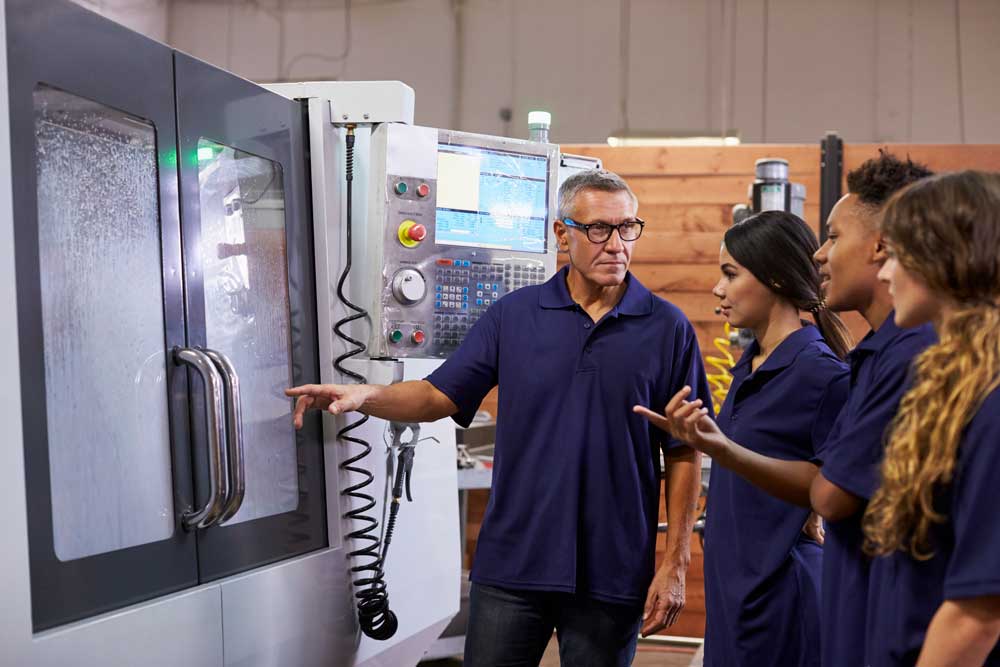
Pulling back the curtain here at WSI, some of the common complaints we receive from our associates is that they were treated poorly by supervisors, didn’t feel like they received adequate training, didn’t have a voice in the operations and issues that arose during their shift, or felt like they are treated differently because they are on a temporary assignment.
I’ve learned that people will forget what you said, people will forget what you did, but people will never forget how you made them feel.
Maya Angelou
How does this negatively impact your business?
Many associate workers have long felt that they’re treated as second-class citizens in some workplaces. Your business has a responsibility to everyone who comes to work for you each day, whether they are full-time employees or temporary workers. Morale and employee relations problems can arise when you have temps working alongside permanent employees for months, doing the same work and putting in the same hours, but not receiving the same benefits afforded their permanent employee coworkers. Your regular employees might look down on those working as temporary associates as “outsiders,” or simply not talk to them or mix with them at lunch or office functions.
If an associate worker on assignment has negative feelings about their workplace early in their assignment, what are the chances they see the assignment through? How much desire will they have to become a full-time employee in your operation? What are the long-term effects to your culture and reputation when new employees have a negative experience working for you?
Get Into Their Heads-In a Good Way!
The psychological aspect of managing employees is habitually lost on large scale employers. Making an associate feel like part of the team improves their output. Acknowledgement of their issues, ideas, and concerns helps validate them as an employee and makes them feel pride in being a part of your operation.

Easy ways to do this include remembering their name right off the bat, asking top-level questions about the employee (where they grew up, family at home, etc) and what they like. How can you prepare them for a terrific first day? Who’s going to show them around and who are you asking to have lunch with them to make them feel welcome from the start? An associate who feels seen and that their new employer is making a small effort to treat them like the ‘family company’ everyone always boasts about in their job descriptions will make you stand out from this being ‘just another job.’
Keep Them Safe

Studies show that the frequency and severity rates of on-the-job injuries are significantly higher with temporary workers. Never assume an associate is fully prepared to work unsupervised until you have taken the time to see that they can safely perform their work tasks. It’s not just the dangers of the job. Many employees are going to be eager to prove themselves and could open themselves up to injury or harm moving too fast or without caution. With potential legal liability, it is best practice to ensure that all workers undergo a basic orientation safety training as well as issues such as discrimination and harassment.
Show Them the Way

Most of WSI’s clients love to hire hard-working, dependable associates as full-time employees usually well before the minimum hours-worked threshold is even met for the assignment. Supervisors and team leaders can be on the front lines not only to train workers on temporary assignment, but to also motivate and coach them to get to the finish line and become full-time employees.
If a temporary associate can see the way forward, feels that they’re already part of your team, and their concerns and ideas are validated by their supervisors, why would they not give your company their loyalty and best effort? Coach your staff to treat temp workers as equals, and you’ll likely see your requests for temporary assignment workers drop sharply over the long run because you’ve hired them all to your team.
Best Tips for Business Donations to Charity
Your business can create a simple act of kindness that benefits the community and helps your brand build goodwill. Corporate philanthropy is the act of a corporation or business promoting the welfare of others, generally through charitable donations of funds or time. Donating to nonprofits helps the charity of course, but the impacts of giving to charity and how it helps your community and your business are invaluable.
Sadly, contributions by U.S. companies fell 6.1% in 2020 to $16.66 Billion (a decline of 7.3% when adjusted for inflation) during the pandemic, while individual donations increased. This is largely blamed on the economics of the pandemic in 2020, as personal savings rates skyrocketed, while corporate profits were down 5.1% in 2020.
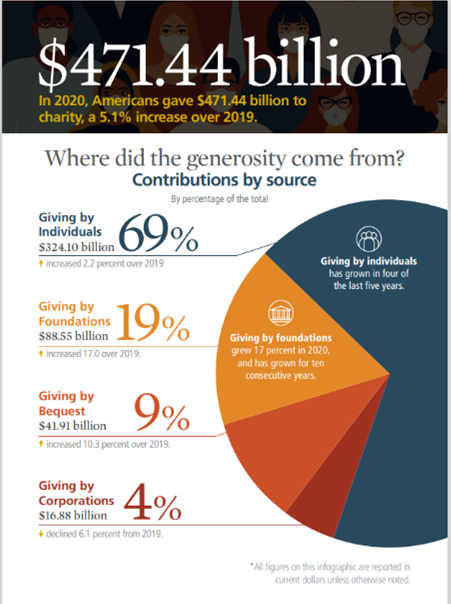
On average, corporations donate less than 1% of their profits to charity. American Express and The Chronicle of Philanthropy recently conducted a study that found small companies donate an average of 6% of their profits each year. American households donated 2-3% of their income to charities over the same period. Many would like to see corporations increase their donations to match what the typical American gives each year.

WHY DOES MY BUSINESS NEED TO STEP UP?
A study from the Chronicle of Philanthropy says declining levels of trust among Americans for most institutions and each other may also contribute to the move away from charitable giving. Most of the distrust lies along the same division lines in American society today. That mistrust is especially pronounced among Gen-Z and millennials, which could cause another layer of challenges for charitable organizations. An example of this would be Saint Jude’s Children’s Research Hospital, which raised $2 billion in 2020, making it the third most contributed charity in the United States. Yet, only half of what St. Jude raised over the last five years went to research or patient care. Thirty percent went to cover fundraising costs. Allocations like these cast doubt in donors’ minds about the true impact of their gift.
How much money Americans make also plays into the reduction in charitable donations. Four out of five households with an income of $200,000 or more contributed to a nonprofit. On the opposite end of the spectrum, less than three in five households with an income of $50,000 made a charitable donation in 2020.
In addition to helping fill in the gaps for your local nonprofits, there are other benefits for your business including building goodwill in your local community, improving the morale and company culture of your organization, promoting charities that match your values as a company, and building up your network.

WHERE DO I START WITH CHARITABLE GIVING?
Volunteer: Instead of a monetary donation, companies can donate their time to a great cause. Volunteer as a company at a soup kitchen, charity run or homeless shelter. With volunteer support initiatives, companies partner their employees with nonprofits to provide specialized support only that company can provide.
Sponsor a sports team: Youth organizations are always looking for businesses to sponsor their teams. Donate funds towards field upkeep and uniforms. Companies that sponsor teams can have their names displayed on uniforms or field signs.
Launch a charity drive: Start a collection for a particular cause. Your company can collect non-perishable food items for distribution at food banks. Toy drives are popular around the holidays.
Technical Assistance: Do you operate with professionals who could donate their skills and time to help non profit organizations get a leg up on technology, web and IT services, or graphic design. You can’t claim this as a deduction, but it’s an invaluable donation to many groups.
Donate online: Set up automatic donations through virtual giving platforms. Donors that set up some sort of recurring monthly donation give 42% more than one-time givers, claims Nonprofit Source. You could even leave out a collection jar at your place of business and cash in the collected amount to send through an online portal.
Create A Giving Culture: Collective participation in philanthropy engages employees with each other. Companies with engaged employees who enjoy their jobs outperform companies with disengaged workers by up to 202%! You can match employee contributions to their favorite charities. Employee grant stipends are also a way to not only encourage giving, but to create an added benefit to employees and their well being. An example is The Coca-Cola Company, which offers a $20,000 employee matching opportunity, and Walmart, who provides $250 to employees for 25 volunteer hours.

WHAT CAN I DEDUCT?
Studies show that donating to nonprofit organizations just to get a tax break are few and far between. Business deductions for charitable contributions may be limited, and the deductions may only be deductible for the individual owners rather than the business itself. Every business type, with the exception of traditional C corporations, pays taxes as a “pass-through” entity. This means the business’s taxes are passed along to the company’s individual owners.
The IRS website reads, “In general, contributions to charitable organizations may be deducted up to 50% of adjusted gross income computed without regard to net operating loss carrybacks.” New laws now permit C corporations to apply an increased corporate limit of 25% of taxable income for charitable cash contributions made to eligible charities during calendar year 2021. The increased limit is not automatic. C corporations must choose the increased corporate limit on a contribution-by-contribution basis.
It’s important to start by verifying whether you can claim a deduction for a donation to a charity. In order to claim as a deduction, only donations to 501(c)(3) organizations qualify, and a donation to an individual person or any other 501(c) designated non-profit is typically not tax-deductible.

If donating to a new charity this year, be sure to ask to see the business’s letter from the IRS that designates them as a tax-exempt organization. You can also search using the IRS Exempt Organizations Select Check online tool to verify whether the charity is or is not eligible for a deduction.
Don’t make it so that you’re donating to receive a benefit of any type (e.g.. donations to a raffle don’t qualify because you could win a prize in return). As mentioned above, you can’t create a donation based on time and services provided and your meal and entertainment expenses don’t qualify.
You can only deduct mileage if you were not traveling to the destination for any other reason. You cannot deduct your time or the time of your employees who are volunteering for a charitable organization. Gifts and/or donations to political parties, organizations, candidates, or particular individuals, are not recognized as tax-deductible by the IRS.
Do not take this as professional tax advice. It’s not a bad idea to speak with financial experts for advice on how to donate to charity in a way that makes sense for your business.
Everything Great (And Not So Great) About Third Shift
What can you get done while the world is sleeping?
Third shift isn’t for everyone. Even if you are a night owl who thrives on the night shift, it’s not meant to be for life. Most people never think about working the third shift. Seventy-five percent of the world starts their workday between 6am and 10am every day.
For many, it’s just unnatural, sleeping while the world buzzes, and working while the world sleeps. But for millions of Americans, there are quite a few reasons why people choose the graveyard shift: emotional and financial benefits, privacy, less traffic, and more focus just to name a few. But there are also certain health issues you should monitor as you work through the wee hours of the morning. Let’s take a dive into what happens on the graveyard shift.
THIRD SHIFT STATISTICS
An estimated three million Americans now work third shift – between 11 pm and 7 am. An additional four million employees go to work during the evening shift, and even more work floating or erratic schedules that include night work. One in five employees in the U.S. works nonstandard hours, like evening, night, or rotating shifts.
IN DEMAND JOBS
Ziprecruiter says that their number of postings for jobs that require overnight shifts was almost fourteen times higher than was average before the pandemic hit. Clearing the backlog of supply chain issues and meeting growing consumer consumption demand has fueled the need for overnight workers.
The rate of night work is still highest among blue-collar workers, particularly service workers (including those in security, food services, manufacturing, and cleaning services), with 6.5% of the 11 million service employees working night shifts and 10.8% working evening shifts.
BENEFITS OF THIRD SHIFT

- A higher salary: Many companies offer shift differential, or more pay, for working hours outside of the first shift. WSI is not an exception, as most of our clients offer $1-2 more per hour to work overnights. It adds up quickly. $16 extra dollars per day over a 52-week calendar year is more than $4000 in extra salary.
- You can grow your career faster: Most third shifts operate with a smaller staff than the first or second shift. This means you’ll have more opportunities to cross-train on jobs, gain new responsibilities, explore different areas of the business, be exposed to various projects and ultimately make yourself a more well-rounded employee. Overnight employees tend to be less micro-managed as well.
- A better work-life balance: Working overnights allows you to be able to make those doctor visits or other errands or appointments that can only be done during the hours of 9am to 5pm. It gives some parents who share the load with child-care a chance to sleep while their kids are at school. Many parents are able to put their kids on the bus each morning, sleep during the day, pick up kids and have dinner with them each evening and even tuck them in before heading off to work for the night.
- The option to go to school during the day. This is the ultimate in discipline and time management. Many third-shifters find working overnight and going to school during the day is the perfect way to work their way through college. Third shift allows in-person classroom attendance and a chance to grow your skills or develop them for a new career path. How you get your homework done, we have no idea!
- Privacy – It’s no surprise that some on the third shift aren’t the biggest fans of other people. You’ll find some who get anxious around large groups of people that typically work the earlier shifts. Working overnight gives you a chance to increase your productivity without stress or distraction. Less people means more focus on the task-at-hand, less meetings, and best of all, a faster commute!
WHY PEOPLE WORK THIRD SHIFT
DANGERS OF WORKING THIRD SHIFT
Circadian rhythms are physical, mental, and behavioral changes that follow a 24-hour cycle. A Circadian disruption, a disturbance of biological timing, is believed to be a cause of many health issues for people who work the third shift for multiple years.
In a recent National Toxicology Program report, it was concluded that there is “high confidence” that persistent night shift work that results in circadian disruption can cause human cancer. Chronic sleep loss has also been shown to be a contributor of high blood pressure, heart disease, and strokes.
HOW TO SURVIVE THIRD SHIFT
Prioritize Sleep: On average, third shift workers get 45 minutes less sleep than their 1st and 2nd shift peers. Make a focused effort to go to bed at the same time each day and to get a full seven to eight hours of sleep per night day.
Get Your Family on Board: Make sure members of your family know when you’re sleeping, and when you’re awake. Post a schedule or calendar where they can see it. Make sure you find time each day to share a meal with your family as well, as it will fulfill your emotional needs to have connections.
Maintain a routine: Consistency is key to success working third shift. Rotating between day and night shifts could be problematic for your sleep schedule. You should strive to wake up, leave, work, eat, hit the gym, get home and relax at the same time each day.

Consistent meal schedule: Take your meals at the same time each day. It’s important to have the energy to get through an unconventional schedule. Avoid the cliché of living off of nicotine and caffeine. Stay hydrated with water, mix in plenty of veggies into your diet, and keep the caffeine and sugar to a manageable level.
Hit The Gym Everyday: The number one way to manage any stress on your body from the third shift is to work out several days a week. Scheduling some gym or fitness time each day will keep you social, healthy, and trim. Many gyms have classes starting as early as 5 am. Working out after your shift may not seem appealing, but it’s a great way to unwind from the day, release anxiety, and you’ll sleep like a champ.
Third shift can be a lifestyle. The extra pay and daytime availability are terrific perks. Take good care of yourself, maintain a strict regimen, and be pushing to find an exit at some point to avoid sacrificing your health.
How to Help Aging Workers and Your Business
Hiring reliable older workers benefits your business more than you can imagine.
Continue readingFive Internal Marketing Channels That Are Better Than Email
Stand out and engage your employees using these easy techniques
Most companies have a marketing department. That department probably spends their days strategizing how to brand the company in a B2B or B2C environment and attract more customers. If you’ve got the external marketing covered, the next question is how well do you promote yourself to your employees?
Internal marketing should be prioritized as highly as external marketing efforts. In a tight labor market, keeping your employees engaged and fulfilled leads to better retention. The problem many employers have is relying simply on newsletters with article after article or putting important information into another email. How many promotional emails do you delete in a day without even reading? While email marketing internally should be a part of your arsenal of tools, there are additional, effective ways to engage and inform one of your most important audiences, your employees!
Here are five non-email internal marketing channels to try that that are not an email that will engage your employees.

PRIVATE SOCIAL MEDIA CHANNELS
It’s easy to manage social media profiles and add/remove users as their employment status dictates. Create a private, employee-only account on social platforms your employees frequent. The housekeeping of getting everyone onboarded should be a focused effort. These channels allow all staff to have a voice for your business. Keep the content light and engaging, and be sure to respond to every post and comment.
TEXT MESSAGE CLUBS
Text message marketing uses SMS (Short Message Service) to deliver messages to subscribers. There are many companies you can contract with to manage your text database of employees and even help you create campaigns like polls and contests. 97% of all text messages are read within fifteen minutes. Creating a text message club can push out relevant and timely messages valued by your employees.

FACE-TO-FACE TABLES
Is the C-Suite making decisions based on the productions floor staff’s operating reality? One way to ensure that is arranging consistent, casual roundtable discussions. Getting administration in front of the floor staff can be as simple as setting up a table in the break room or conference room and inviting a couple of members of each team to meet and discuss wins, opportunities for process improvement, and answer any questions in safe spaces. Increase engagement with giveaways for attendees (like food certificates and company schwag), or letting them leave a few minutes early if the roundtables are held at the end of the day.
STAY INTERVIEWS
Staying on that face-to-face theme, a new practice taking hold is called the ‘Stay Interview”. The idea is to continually interview current employees and find out what their honest intentions are, how their jobs can be better, and what would keep them in their current job. Here’s an article on how big business is using the Stay Interview to fight turnover and retain employees.

VIDEO CONFERENCES
Getting everyone onboard a company-wide Zoom or other video call offers up opportunities to create special recognition, present professional video presentations, and sell your reputation with the entire team at the same time. Always try to keep these brief, and highly entertaining and engaging. Whatever you do, don’t do what better.com did and fire 900 employees by teleconference. Shudder.
When using internal marketing, work to communicate effectively and address your own shortcomings as a company honestly and optimistically. Let employees know that their feedback is crucial and their honesty will meet no form of retribution. Ideally, you could use one or all of the channels on a rotating basis.
Veteran’s Day Highlight: Corporal Brent Rogers
Today we recognize all veterans who have served our country, past and present. In honor of Veteran’s Day, we interviewed WSI’s own Brent Rogers (Payroll Coordinator), retired US Army Corporal, to learn more about his military experience.
What motivated you to join the military? How did you choose your branch of service?
I joined up because I wanted to serve my country and for the adventure. Both my father and grandfather served in the U.S. Army, so it was a pretty easy choice for me when I decided to enlist.
Tell us a little about your time in boot camp.
Boot camp was ten weeks long at Fort Leonardwood, Missouri. The first three weeks were pretty rough, but once you get used to the routine it wasn’t too bad. You learn a lot of things in a very short amount of time there (land navigation, first aid, rifle marksmanship, etc,) Our drill sergeants yelled and screamed a lot, but once we neared graduation they would mostly act as mentors to us. They all had served multiple tours overseas and were exemplary soldiers. One of them shook hands with me after I graduated, and I was pretty proud of that.

What was your primary job after training?
My primary job was being a motor transport operator and I was attached to a field artillery unit. Our main mission was to haul and distribute fuel and ammunition to the cannon crews.
Where did you serve the majority of your time in service?
Most of my time was spent at Fort Custer over in Battle Creek. We also spent time up north at Camp Grayling when we had a field training exercise.
What rank are you most proud to have earned, and why?
The rank I was most proud of was being a corporal, which is an NCO (Non-Commissioned Officer). NCOs are considered to be the backbone of the army. They take orders given from officers and ensure that the soldiers within their squad or team get them completed. I felt pretty proud to have that responsibility.
Which medals or citations are you most honored to have received, and why?
The medal I was most honored to receive is called the Broadsword Service Medal. It’s awarded to those who have completed four or more years in the Michigan Army National Guard. I thought it was pretty neat since it’s only awarded to soldiers who served in Michigan.
Tell me about some of the special people you met.
One of the coolest aspects of being in the army is that you get to meet people from all walks of life. One of my best friends in the Army came here from Mexico and actually got his citizenship when he was in boot camp, which is pretty cool!

What was the best and worst ‘military’ food you were served, and why?
The best meal I ever had was steak, mashed potatoes with gravy and biscuits. We were at Fort Irwin, California for a month and had just gotten back from a two-week field training exercise in the desert. It just tasted really good after eating nothing but cold rations for two weeks. The worst meal I had was powdered eggs and what looked like undercooked bacon for breakfast once. The eggs looked pretty gross because they were green, but we ate them anyway haha.
Any funny stories you experienced that could only happen in the military?
One funny story comes to mind. In boot camp, they taught us how to throw a hand grenade. You stand inside a low concrete square with an instructor, throw the grenade, and duck behind the barrier to shield yourself from the explosion. Well, this one guy in our platoon chucked the grenade too low, it hit the barrier and bounced back. The instructor grabbed the guy by his collar and dove out of the barrier. The guy got yelled at a lot and they made him run laps around the barracks when we got back later that day. Everyone thought it was pretty hilarious at the time.
What are some ways civilians can honor Veterans not just on Nov. 11, but every day?
I think the best thing civilians can do to honor those who served is to volunteer and try to become an asset to both our country and our community.
How did your military experience affect your life today?
Well, I never can sleep in past 7 am nowadays haha. All joking aside, the military taught me some pretty important values like honor, courage, and commitment. I try to bring those values to my job here at WSI.

Brent, thank you for your service and for sharing your experience!
